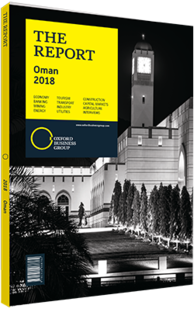Abdul Razak Ali Issa, CEO, Bank Muscat: Interview

Interview: Abdul Razak Ali Issa
What policies has the Central Bank of Oman (CBO) pursued to relax reserve requirements and stimulate greater liquidity in the banking system?
ABDUL RAZAK ALI ISSA: The banking sector in Oman is governed by policies defined by the CBO. The CBO reduced the reserve requirement in the form of cash balances from 5% to 3%, and allowed banks to hold 2% in the form of government securities. This helped to create extra liquidity in the market. The CBO’s prudential framework for liquidity risk requires banks in the country to have an appropriate liquidity management strategy that fully supports their scope of operations. Additionally, each bank is required to carry out a liquidity stress test on a quarterly basis.
The Omani banking sector has both adequate liquidity and the financial strength to continue supporting economic diversification and development projects, which will positively contribute to the economy in the coming years. Moreover, the asset quality of Omani banks is strong, as gross non-performing loans have been contained at below 2%. The quality of banking assets has not witnessed any significant deterioration, and the delinquency rate went up only marginally from 1.9% in 2015 to 2.1% during 2016.
How likely is it that the government’s budgetary needs will impact liquidity in Oman?
ALI ISSA: The government has embarked on a prudent borrowing plan, and continues to successfully tap both domestic and international markets to cover the budget deficit. The government plans to finance fiscal deficits by expanding its long-term borrowing in the domestic market through government bonds, sukuk (Islamic bonds) and by raising external borrowing. At the same time, domestic borrowing facilitates financial deepening and also develops a yield curve. When the government does raise resources from domestic sources, the government and the CBO closely coordinate to tap the market at the appropriate time and closely monitor any impact such borrowing would have on the liquidity condition of banks.
How have banks in Oman complied with initiatives to help small and medium-sized enterprises (SMEs) gain access to credit?
ALI ISSA: According to CBO data, the Omani banking sector had extended a little over 3.5% of total credit to the SME segment as of August 2017. With a view to enabling banks to achieve the 5% target, banks have been allowed to reckon non-funded credit up to a maximum of 1% of the overall 5% target.
What impact will the implementation of MpClear, the mobile payment clearing and switching system, have on financial inclusion?
ALI ISSA: MpClear is enhancing inclusion by easing the use of and promoting electronic payments in Oman. In conformity with international standards, MpClear provides security and convenience for financial transactions through mobile phones. MpClear is set to emerge as a convenient electronic payment tool for cash transactions in Oman.
What prospects are there for greater use of big data analytics in the sector?
ALI ISSA: Customer data analytics is an integral tool for the success of organisations. Customers are now empowered with connectivity and access to information about where to shop, what to buy and how much to pay, and they can access this information anywhere at any time. This necessitates awareness about how customers will behave when interacting with organisations, and suitable measures need to be adopted to meet their requirements.
A clear understanding of the buying habits and lifestyle preferences of customers helps to anticipate their requirements, which in turn allows organisations to carry out their objectives more successfully.
You have reached the limit of premium articles you can view for free.
Choose from the options below to purchase print or digital editions of our Reports. You can also purchase a website subscription giving you unlimited access to all of our Reports online for 12 months.
If you have already purchased this Report or have a website subscription, please login to continue.

